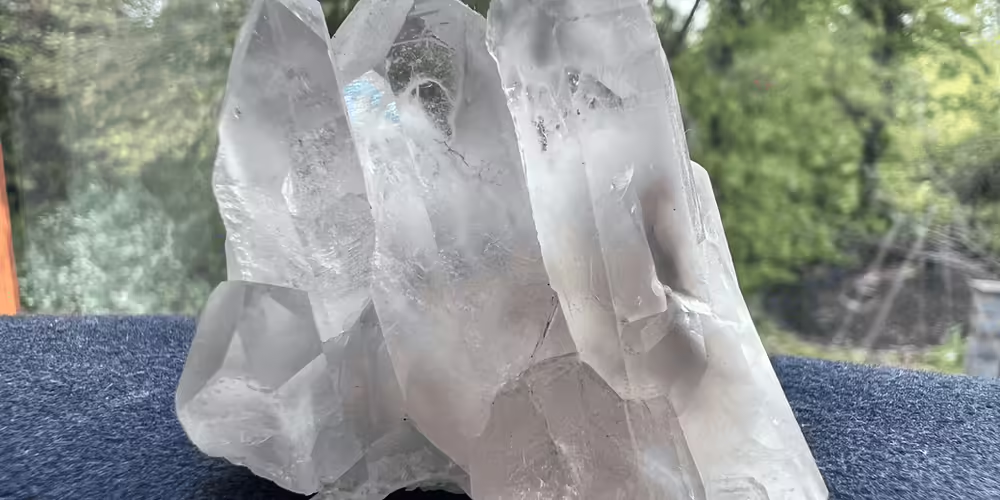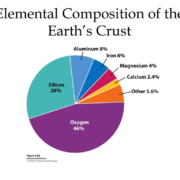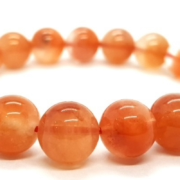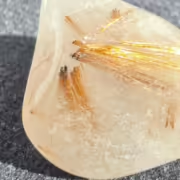Quartz: Properties, Uses and Virtues
Quartz: A diverse family!
Quartz, a captivating and versatile gemstone, has fascinated mankind with its bewitching appeal and varied properties. With a rich history that spans cultures and civilisations, this enchanting gemstone has both metaphysical and practical significance.
Join us on a journey to explore the geological formation, raw crystal beauty, global sources, historical significance and metaphysical attributes of quartz.
From soothing energies to vivid hues, quartz has left an indelible mark on the field of gemstones.

- Geological Formation of Quartz
- Rough Quartz – Raw Beauty Revealed
- Sources – The Global Scope of Quartz
- Historical Significance of Quartz – Through the Ages
- Metaphysical Properties of Quartz – Illuminating energies
- Varieties of Quartz
- Quartz colors
- Durability and Wearability of Quartz
- Quartz Enhancements – Preserving Natural Beauty
- Synthetic Quartz – Nature in the Laboratory
- Imitations of Quartz – Discerning the Authentic
- Quartz care – Preserving natural beauty
Geological Formation of Quartz
Quartz, a prominent member of the mineral kingdom, emerges through complex geological processes. It originates deep in the Earth’s crust, where silicon and oxygen atoms combine to form a crystalline lattice structure. This remarkable arrangement gives quartz its unique properties and stunning visual appeal.
Quartz can be found in a variety of geological formations, including igneous, metamorphic and sedimentary rocks.
Rough Quartz – Raw Beauty Revealed
Uncut monocrystalline quartz crystals, such as amethyst or prasiolite, have a raw, captivating beauty that fascinates enthusiasts and gemmology experts alike. Each crystal has distinct geometric shapes, with hexagonal prisms and pyramidal terminations as prominent features.
These natural formations not only captivate the eye, they also carry significant metaphysical and energetic properties.
Polycrystalline quartz, like chalcedony, has no specific crystalline form.
Its name of rock means that it is composed of a multitude of micro-crystals.
Sources – The Global Scope of Quartz
Quartz is mined in various regions around the world, including Brazil, the United States, Madagascar and others. These global sources contribute to the variety of quartz types and colours available on the market. The geological diversity of these places is reflected in the unique qualities and appearances of the precious stone.
Historical Significance of Quartz – Through the Ages
Quartz, a gemstone of remarkable beauty and versatility, has a rich historical significance that has spanned cultures and civilisations down the ages. Revered for its captivating appearance and perceived mystical properties, quartz has played a role in the evolution of human culture, spirituality and technology.
In ancient civilisations:
Ancient civilisations recognised the unique attributes of quartz and incorporated them into their beliefs and practices. In ancient Egypt, quartz was used to create intricately carved amulets and jewellery, believed to bring protection and power to the wearer. The ancient Greeks believed that quartz was eternal ice, a gift from the gods, and used clear quartz crystals to cool their hands in hot weather. The word “crystal” itself comes from the Greek word “krustallos”, meaning ice.
Amerindian culture:
In cultures such as the Amerindian tribes and various indigenous groups, quartz was considered a sacred stone, believed to possess powerful spiritual energies and the ability to connect with the divine. Quartz crystals were often used in ceremonies, divination and healing rituals. Many indigenous cultures recognised quartz’s ability to amplify intentions and energies, making it an essential tool for shamans and spiritual leaders.
Middle Ages:
During the Middle Ages, the role of quartz in technology and science evolved significantly. In the 20th century, the piezoelectric properties of quartz were exploited for practical applications, particularly in electronic devices. Quartz crystals have served as essential components in watches, radios and later in modern computers and communications systems. Quartz’s ability to vibrate at a precise frequency has made it invaluable for accurate timekeeping and frequency control.
Throughout history:
Throughout history, the historical importance of quartz has been linked to its associations with clarity, protection and spiritual connection. Its enduring appeal and multi-faceted attributes have led to its continued use in a variety of cultural and industrial contexts. From ancient talismans to cutting-edge technology, quartz’s journey through time illustrates its remarkable ability to adapt and remain relevant in a changing world.
For more specific historical facts, please refer to the page for each variety.
Metaphysical Properties of Quartz – Illuminating energies
Quartz is renowned for its metaphysical properties that promote balance, clarity and healing. Often referred to as a ‘universal healer’, quartz is said to amplify energy, purify negativity and promote spiritual growth. Its versatile energies make it a cornerstone of crystal healing practices and meditation.
For more specific information, please refer to the page for each variety.
Varieties of Quartz
Quartz, with its astonishing diversity, presents a captivating range of gem varieties that can be categorised into two distinct groups: monocrystalline quartz and polycrystalline quartz. These variations not only demonstrate the natural adaptability of quartz, but also offer a spectrum of colours, textures and energies that have captivated gem enthusiasts throughout history.
Monocrystalline quartz :
Monocrystalline quartz, characterised by its unique crystal structure, includes some of the best-known and most highly prized gemstones:
- Rock crystal or Clear quartz: Renowned for its unrivalled transparency and purity, rock crystal embodies clarity and energy amplification. It serves as a versatile canvas for lapidaries, allowing intricate carvings and brilliant facets to enhance its natural beauty.
- Amethyst: A royal purple gemstone, amethyst is celebrated for its spiritual and protective qualities. Its soothing energy and enchanting colour make it a popular choice for jewellery and spiritual practices.
- Ametrine: The dazzling combination of amethyst and citrine in a sublime two-tone quartz.
- Citrine: Radiating warmth and vitality, citrine’s golden hues evoke the energies of the sun. Often associated with abundance and positivity, citrine’s sunny appearance is an instant pick-me-up.
- Smoky quartz: With its smoky brown to grey tones, smoky quartz evokes misty landscapes. It carries energies of rootedness and protection, making it a favourite of those seeking stability.
- Prasiolite: Also known as green amethyst, prasiolite has a serene green hue that matches the vitality of nature. It is believed to promote balance and heart-centred energies.
- Rose quartz: Embodying love and compassion, the delicate pink tones of rose quartz inspire feelings of tenderness and emotional healing. It is often associated with questions of the heart.
- Inclusion quartz: Known for its breathtaking gardens and landscapes, inclusion quartz deserves to be discovered.
- Milky quartz or snow quartz: Known for its milky colour, which gives it its name.
Polycrystalline quartz :
Polycrystalline quartz encompasses a diverse range of gemstones with complex microcrystalline structures, offering a remarkable spectrum of colours and patterns. This group includes :
- Chalcedony: A generic term for several microcrystalline quartz gemstones, chalcedony encompasses a wide range of colours and patterns. Carnelian and sardonyx have warm shades of red and orange, while prase and chrysoprase have lush green tones. Agate, moss agate, onyx and heliotrope, or bloodstone, captivate with their intricate bands and captivating designs.
- Jasper: Celebrated for its earthy appeal, jasper presents a rich variety of colours, often with intricate patterns evoking landscapes, forests and skies. Each type of jasper has its own unique energetic qualities.
- Quartzite: Aventurine quartz is an example of quartzite and polycrystalline quartz, adorned with glittering inclusions that create a sparkling effect called adventurence. This precious stone is often associated with good luck and prosperity.
- Replacement by quartz or silicification: Tiger’s eye, a shimmering stone, and silicified wood are examples of replacement by quartz or silicification. Tiger’s eye features captivating bands of colour that move with the light, while silicified wood preserves the organic textures of old wood while transforming it into stone.
Quartz colors
Quartz comes in a range of captivating colours, from transparent to opaque, and from pastel shades of yellow, violet and green to vibrant hues of purple, yellow, pink and brown.
These diverse hues add to quartz’s versatility as a gemstone, making it a popular choice for both jewellery and metaphysical purposes.
Durability and Wearability of Quartz
Quartz, with a hardness of 7 on the Mohs scale, has excellent durability and is suitable for a variety of jewellery designs. Its brilliant lustre and enduring charm ensure that quartz jewellery will stand the test of time, delighting wearers for generations.
Quartz Enhancements – Preserving Natural Beauty
Quartz can be enhanced in a number of ways to improve its appearance and market appeal. Certain varieties of quartz, such as amethyst and citrine, are often heat-treated to enhance or alter their colour. Chalcedony is often tinted and impregnated.
For more information, please refer to the page for each variety.
Synthetic Quartz – Nature in the Laboratory
Technological advances have led to the creation of synthetic quartz gemstones that closely resemble natural quartz in appearance and properties. These laboratory-grown gemstones have specific applications, offering alternatives in a variety of industries, including jewellery.
For more information, please refer to the page for each variety.
Imitations of Quartz – Discerning the Authentic
To ensure the authenticity of quartz gemstones, it is essential to be aware of common imitations and misrepresentations. Common imitations include glass and other precious stones that resemble quartz in appearance. Buying from reputable sources and obtaining appropriate certifications can help guarantee the authenticity of quartz gems.
For more information, please refer to the page for each variety.
Quartz care – Preserving natural beauty
Preserving the timeless beauty of quartz requires delicate maintenance. To preserve its brilliance, it is important to avoid exposing quartz to aggressive chemicals and extreme temperatures.
Cleaning with mild soapy water and a soft brush ensures that the radiant charm of the precious stone will last for generations.




